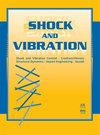Burst Failure Characteristics and Energy Evolution Law of Coal with Prefabricated Cracks at Different Angles
IF 1.2
4区 工程技术
Q3 ACOUSTICS
引用次数: 0
Abstract
In order to study the influence of fissures on the burst tendency of coal, the test and numerical simulation of the burst tendency of coal with different burst angles were carried out. The evolution law of the burst tendency index of coal under the influence of burst angle was analyzed, and the mechanism of energy storage and release of coal under the influence of fissure angle was revealed. The results show that compared with the specimens without prefabricated cracks, the uniaxial compressive strength of the specimens with 0° cracks is reduced by 48.4%, the dynamic failure time is increased by 279.4%, the burst energy index is reduced by 54%, and the burst energy velocity index is reduced by 87.9%. After that, with the increase of prefabricated crack angle, the uniaxial compressive strength of coal increases gradually, the dynamic failure time decreases gradually, the burst energy index increases gradually, and the burst energy velocity index increases gradually. That is to say, the larger the crack angle contained in the coal body, the stronger the burst tendency of the coal body, but it is still lower than that of the complete coal body. With the increase of prefabricated crack angle, the proportion of prepeak elastic energy of coal body increases, the less energy dissipation in the whole loading process of coal body, and the faster energy release rate during failure. The research results can provide some theoretical support for the prevention and control of rock burst disaster.不同角度预制裂缝的煤爆破失效特征和能量演化规律
为了研究裂隙对煤爆破倾向性的影响,对不同爆破角的煤爆破倾向性进行了试验和数值模拟。分析了煤在爆破角影响下爆破倾向指数的演变规律,揭示了煤在裂隙角影响下的储能和释能机理。结果表明,与未预制裂缝的试样相比,0°裂缝试样的单轴抗压强度降低了48.4%,动态破坏时间增加了279.4%,爆能指数降低了54%,爆能速度指数降低了87.9%。之后,随着预制裂缝角度的增大,煤的单轴抗压强度逐渐增大,动态破坏时间逐渐减小,爆能指数逐渐增大,爆能速度指数逐渐增大。也就是说,煤体所含裂隙角越大,煤体的爆破倾向越强,但仍低于完整煤体的爆破倾向。随着预制裂隙角的增大,煤体的前峰弹性能比例增大,煤体在整个加载过程中能量耗散越小,破坏时能量释放速度越快。该研究成果可为岩爆灾害的防治提供一定的理论支持。
本文章由计算机程序翻译,如有差异,请以英文原文为准。
求助全文
约1分钟内获得全文
求助全文
来源期刊

Shock and Vibration
物理-工程:机械
CiteScore
3.40
自引率
6.20%
发文量
384
审稿时长
3 months
期刊介绍:
Shock and Vibration publishes papers on all aspects of shock and vibration, especially in relation to civil, mechanical and aerospace engineering applications, as well as transport, materials and geoscience. Papers may be theoretical or experimental, and either fundamental or highly applied.
 求助内容:
求助内容: 应助结果提醒方式:
应助结果提醒方式:


